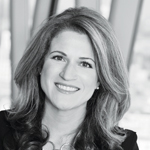Diversified growth funds

|
Written By: Matthew Craig |
Matthew Craig analyses the relatively new investment concept of diversified growth funds and discusses their future prospects for the LGPS
Like most things, the world of investing is prone to fads and trends which come and go. Ideas like smart beta, or portable alpha, are talked up as great new concepts which will guarantee performance for investors – but this does not always prove to be true.
Diversified growth funds (DGFs) are a relatively new investment concept and are still developing; they could prove to be a permanent success, but they are still at the proving stage. So far, DGFs have grown rapidly as a market niche, with assets under management increasing sharply from £25 billion in 2010 to £111 billion in 2015, with forecasts of a £200 billion market size by 2018.
A DGF can be described as a multi-asset fund which invests in a range of asset classes in order to achieve a pre-determined return target, typically cash plus 4% or 5%. It may be useful to compare DGFs to an older investment trend, balanced funds. Back in the 1980s and ‘90s, fund managers offered balanced funds which used a fairly limited range of assets (sometimes just equities and bonds) and which aimed to beat their peer group. In this way, pension funds outsourced a key asset allocation decision to an asset manager, who was often more focused on beating the competition than serving the needs of the investor. So how do DGFs compare to balanced funds? One improvement is that DGFs aim to produce a real return. Another is that they can bring greater diversity, through investment in alternatives. DGFs are also used as part of an overall investment strategy, with a specific purpose, rather than as the central engine of returns, which balanced funds tended to be.
PAAMCO associate director, Cutler Cook, described DGFs as follows: “The range of assets and strategies that DGFs invest in is very wide indeed, ranging from traditional long-only strategies in equities, bonds and credit, to relative value strategies in these asset classes or others (e.g. currencies), to derivatives contracts.” In terms of their investment benchmark, or performance target, Cutler added: “From a performance target perspective, many DGFs use an inflation +x% return target. We are not convinced that using a target linked to inflation makes sense, as there is little inherent link to inflation in most strategies. The targets are more likely linked to the managers’ desire to demonstrate that they are targeting an absolute or real return which is not linked to underlying markets.”
Local government pension schemes (LGPS) are starting to investigate whether DGFs could be a good option for them. Leicestershire County Council investment manager, Colin Pratt, commented: “DGFs is a term that is not really that well defined, and means different things to different people. Part of Leicestershire’s investment strategy is classified by us as ‘targeted return’, and our target is cash +4% pa. – we would define the ambition of this to be equity-like returns with bond-like volatility. Cash +4% seemed a bit racier before interest rates fell to 0.5% or below!”
For LGPS funds, DGFs can simply be a useful investment tool, as a single fund giving exposure to wide range of asset classes. As at Leicestershire, this can be a good addition to part of the portfolio dedicated to producing returns. Pratt commented on his fund’s targeted return approach: “Within this strategy we have three different portfolios, and one of them is the Pictet Dynamic Asset Allocation Strategy. I don’t really see this as a DGF, but others would argue that it is; to me it is simply one part of our targeted return strategy that uses asset allocation as its main tool for generating returns.” DGFs can also be used by defined contribution (DC) pension funds, as it could give a reasonable mix of different assets to DC members. DC members are also likely to want a steady growth profile, without major drawdowns, so a DGF offers a suitable compromise between the volatility of equities, the stability of bonds, and the diversification and growth prospects of alternative asset classes. While LGPS funds can use DGFs, some experts believe that DGFs make most sense for small pension fund investors who do not have the resources to build their own portfolio of diversifying assets. But according to Cook, it may be worthwhile using a DGF without hedge fund exposure and adding a separate fund of hedge funds, in order to increase diversification, both between these two approaches, and against the rest of the investment portfolio.
To produce returns which are now very attractive compared to interest rates in the UK and some other developed countries, DGFs use assets such as hedge funds, private equity, commodities, infrastructure, high yield bonds, emerging market bonds, convertible bonds, and property, in addition to equities. The DGF manager controls the asset allocation and this has a huge impact on how a DGF performs. The point about interest rates falling is important here since this has put pressure on most return-seeking investments, including DGFs. One effect of this has been to place more emphasis on assets such as equities in order to produce returns. A guide to DGFs from the Pensions and Lifetime Savings Association (PLSA) found that the allocation to equities can range from under 20% to almost 70%. If there is a high equity allocation, the risk for investors is that a DGF does not diversify a portfolio with an existing equity allocation, as its returns will be largely driven by equity risk. However, if a DGF is used as a growth asset, this may not be considered to be a problem.
But the potential variation in the underlying asset classes used makes comparing DGFs a challenge for investors. There are now over 20 DGFs from major asset managers, and comparing their performance is quite difficult given the usual investor focus on track record, according to PAAMCO’s Cook. He explained: “Normally such analysis would include examining performance in negative market scenarios, but the track records for most DGFs are relatively short (five years or so) so the asset class has not really been tested in different regimes.” Overall, it seems that when analysing DGFs, investors should look at their exposure to overall risk factors, such as equity risk, interest rate risk, inflation risk, or other factors. Cook added: “From a qualitative point of view DGFs have a variety of approaches so comparison may be difficult. Nonetheless, our analysis seems to indicate that, regardless of the underlying details of the strategy, many of the largest DGFs with the longest track records can have much of their return history explained by about three factors. This may lead the investor to question whether those factors will be the right exposures going forwards and if not, to ask if the managers are sufficiently flexible to change their strategies to capture other factors.”
Over the last few years since the global financial crisis in 2008, market conditions have been relatively benign for growth assets – barring the odd blip – so it is hard, as Cook says, to tell too much about how DGFs will cope with really tough conditions. “Many DGFs have met their targets and produced compelling risk adjusted returns over the past five years or so but our view is that this may not be repeated or repeatable going forwards especially if we see changes in the market environment,” said Cook.
Looking ahead, it appears that DGFs will continue to grow in terms of assets under management if market conditions continue to be supportive for DGFs. But should investment conditions change, the future of DGFs could also become harder to read. The analysis done by PAAMCO found that some DGF strategies may struggle in a period of sustained heightened volatility. In fact, Cook commented: “We think such an environment could be an existential threat for many DGFs.” As with many fashionable ideas, DGFs need to show how they can cope with a range of market conditions in order to take a permanent place in the investment portfolios of investors.
More Related Content...
|
|
|



